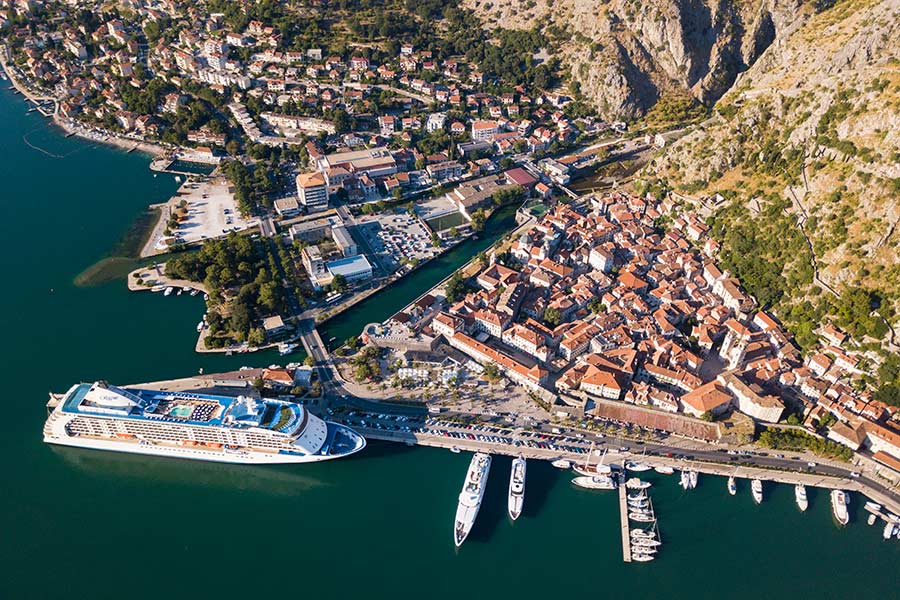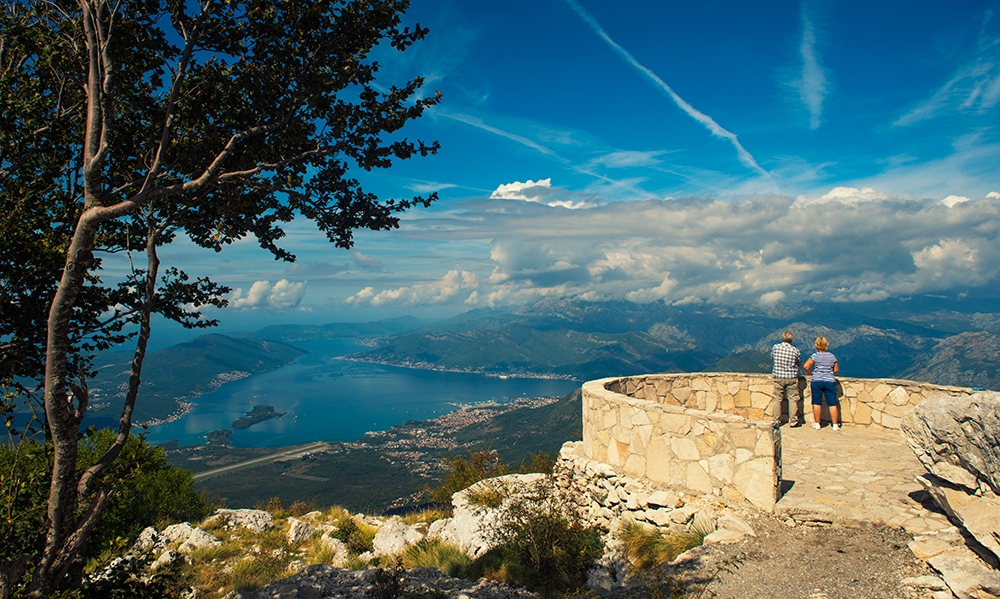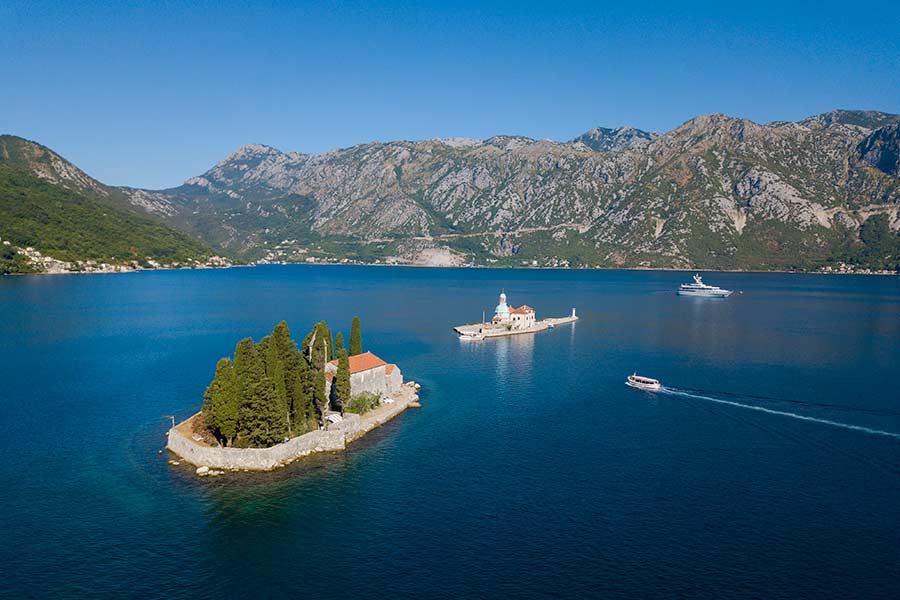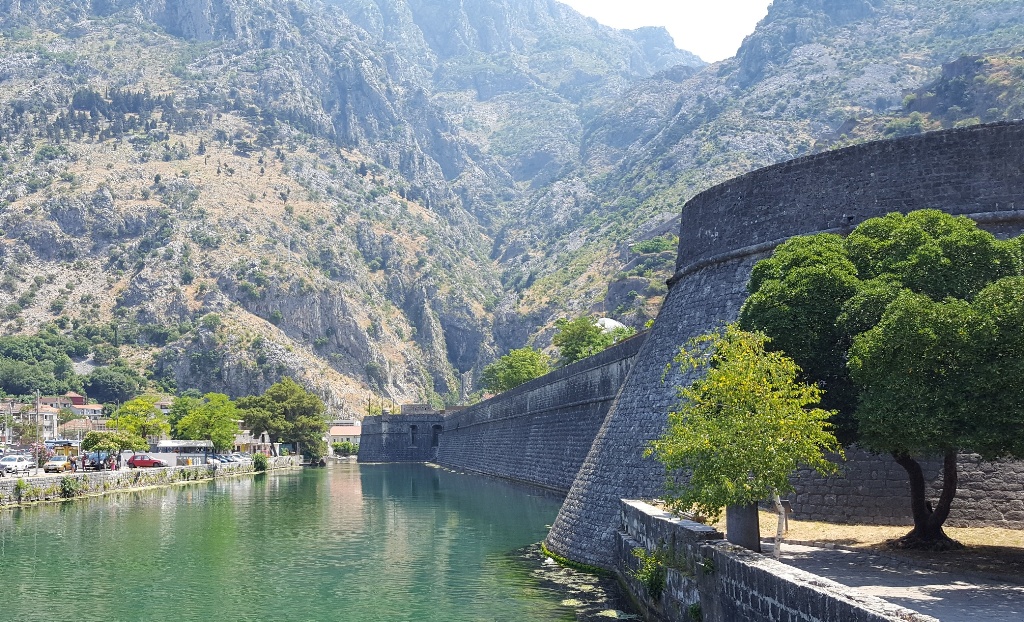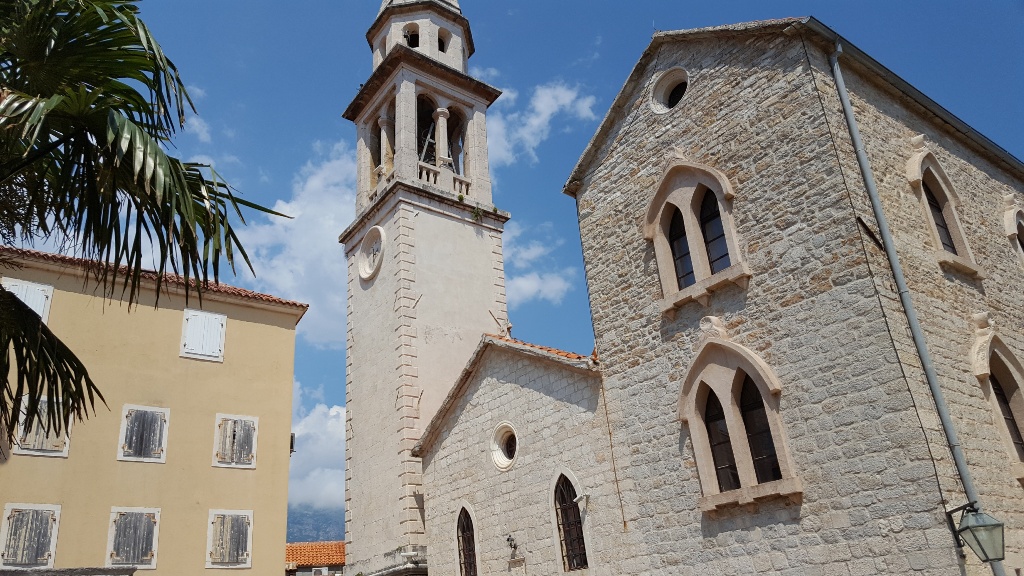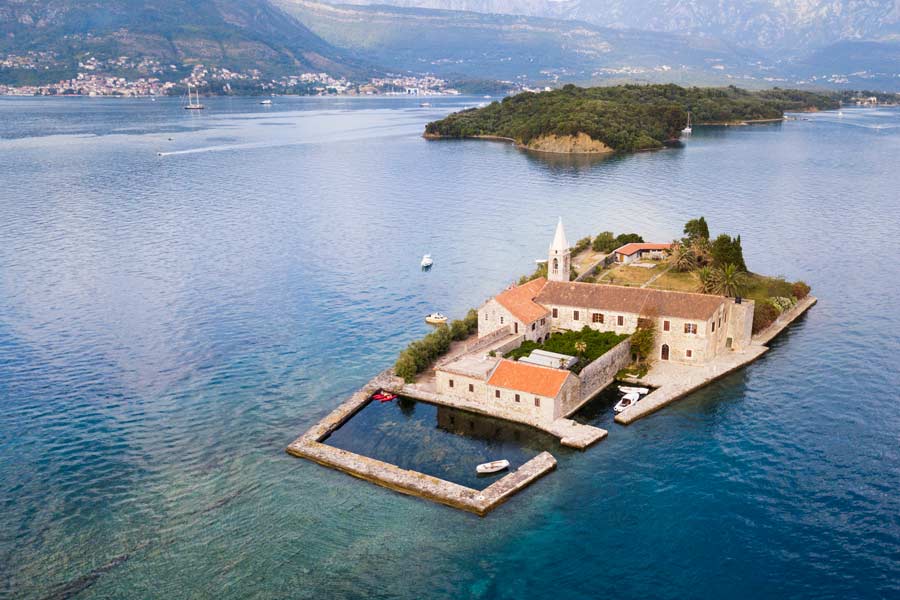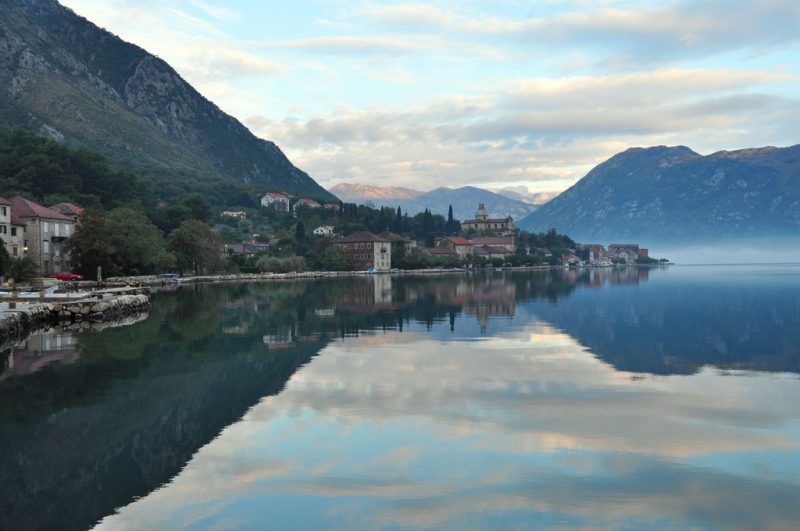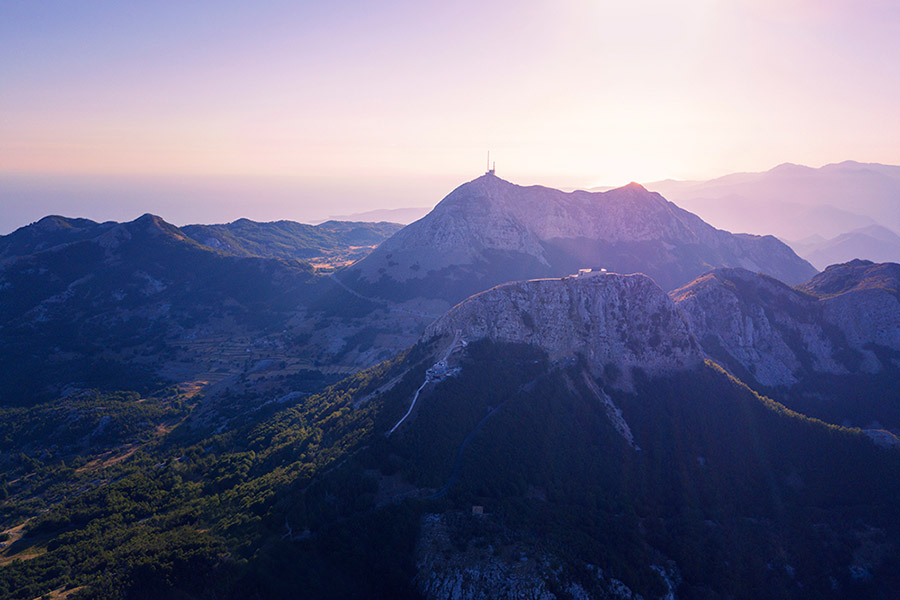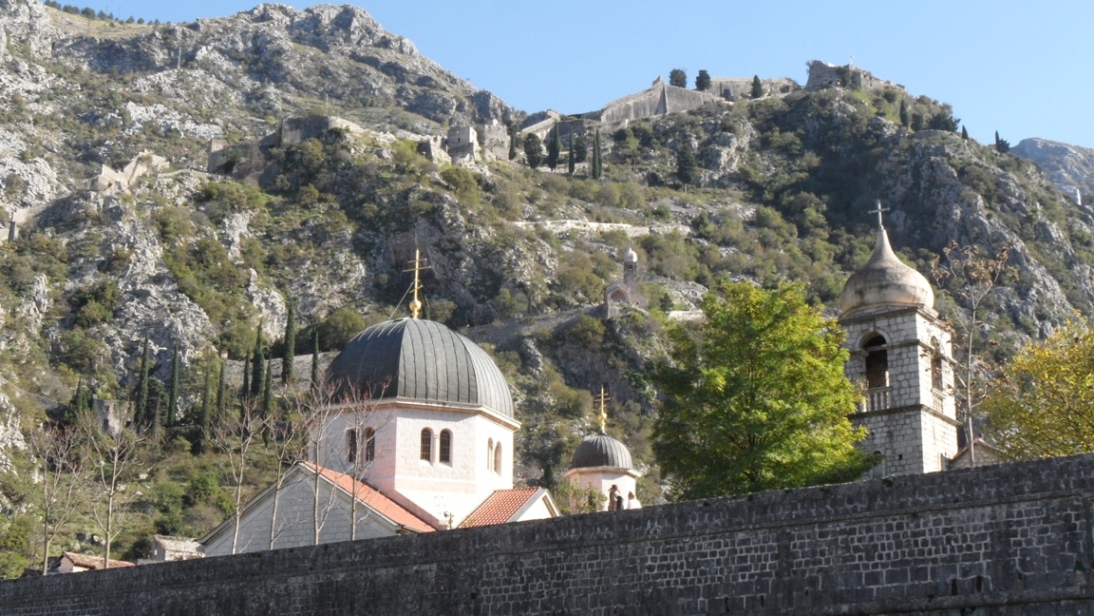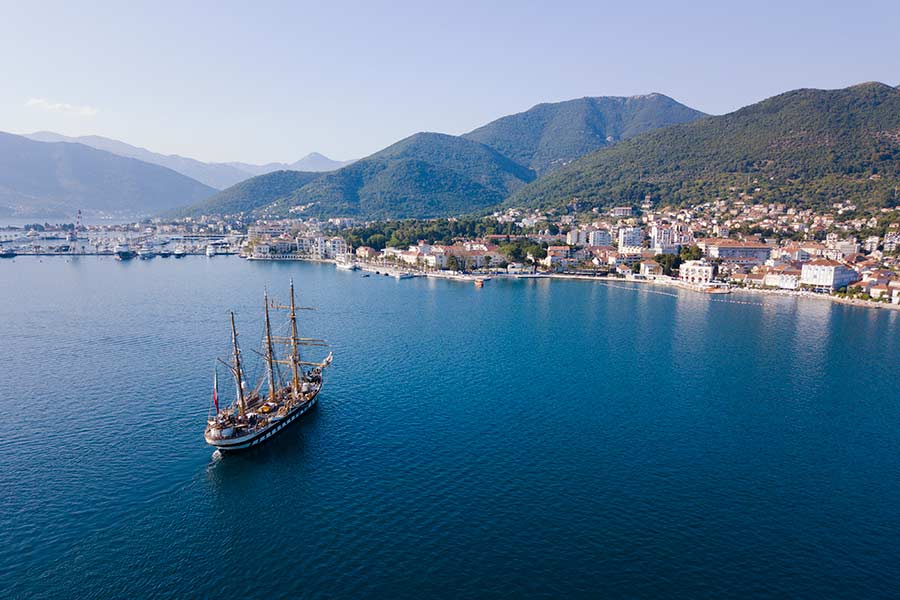Bay of Kotor
You are here: Home > Destinations > Montenegro > Bay of Kotor
About Bay of Kotor
A short drive from Dubrovnik but with far fewer tourists, Kotor is a spectacular setting offering historical sightseeing and superb countryside. The Bay of Kotor (Boka Kotorska) is often described as a "fjord" and you can see why with its narrow shape and steep sided slopes plunging directly into the sea. The bay will instantly fascinate you, it looks as if the mountains have cracked and let the sea in; in fact, it is the southernmost fjord in Europe, the high mountains bend over the thin coastline protecting it from the severe climate from the north. This is why it is an oasis of Mediterranean vegetation such as agave, palm, mimosa, oleander, kiwi, pomegranate and medicinal herbs; when its peaks are covered with snow, the roses bloom in the foothills. The bay is naturally divided into four smaller parts - Herceg Novi bay, Risan bay, Kotor bay and Tivat bay, each of these small towns are treasuries of history, art and beauty and are strung like pearls on its coastline.
The town of Kotor sits at the head of the bay, protected by thick walls hiding a maze of streets and piazzas with plenty of cafes and restaurants among the purely historic buildings. With this unique blend of the ancient and the stylish, the authenticity of this UNESCO protected town remains untouched. As a world heritage site it dates back to the 4th century and brimming with artwork and architecture influenced by some the most profound eras of history. Kotor is enhanced by the magic of its natural and historical surroundings: crystal clear water, limestone massifs of both Lovcen and Orijen, peninsulas, churches and palaces.
The remarkable city walls expand around the old town of Kotor and over St. Giovanni hill for 5km; many a visitor will attempt the tremendous climb up the "staircase" to the fortress way above the town. Kotor is lavished with historical and monumental structures, the most notable, which stands as a great symbol of the old town, is the Cathedral of Saint Tryphon from the 9th century.
Kotor Town is an ideal base for visiting the bay itself but there are many small "resort" villages nearby such as Prcanj which offer alternative locations on our fly drive holidays. However, don't forget the countryside and National Parks just inland; for example, Mount Lovcen is reached via 25 hairpin bends and offers simply incredible views across the bay over the Adriatic.
Perast
Nearby Perast is also worthy of consideration, its compact centre hides an astonishing 16 churches, you can also visit the museum and old aristocratic palaces of famous sea captains that now bear witness to its ancient splendour and richness. In one of them, the Bujevic's palace, the Town Museum is located. There are two islets around Perast town - Gospa od Skrpjela (Lady of the Rocks) and St George with its Benedictine Monastery which are both unique tourist attractions and wonderful sights.
Risan & Herceg Novi
Risan is famous for the remnants of classical culture, the remains of a Roman patrician's villa with beautiful mosaic can be found here. Herceg Novi is a town situated at the end of the bay, its appearance is an illustration of its turbulent history - a fine combination of romantic, Byzantine and oriental styles interweaved in a Mediterranean appearance. Today, Herceg Novi is the town of flowers, it is one of the warmest towns on the Adriatic, with all its windows facing toward the sun and the sea.
Lovćen National Park
The views from Lovćen in all directions provide an unforgettable visual impression; from here you can view the Bay of Kotor down below and all the roads and paths that snake up the side of the fjord towards your position. In addition to the views there are the villages of Ivanova korita and Njeguši, the latter famous for fantastic ham and cheese. Authentic and traditional architecture can be seen in this region such as katuns - the summer settlements of farmers, which are old stone houses with roofs made of sawn straw or laminar limestone and the village guvna - a place where folk meetings and celebrations were held and churches with specific church towers called "distaffs". Climbing up to the mausoleum of the greatest Montenegrin poet and ruler Petar Petrović Njegoš (1813 -1851) represents a highlight of the visit to the national park, the Mausoleum can be reached by the road from Cetinje, followed by an additional 461 steps. This Mausoleum is the most important work of the great Croatian sculptor Ivan Meštrović; it is said that Meštrović asked for a symbolic fee - Njeguški cheese and ham. The chapel is the most impressive part of Njegoš mausoleum, it is nine meters high with the arch covered in a mosaic of 200,000 gold-plated tiles, the Sarcophagus is reminiscent of traditional Montenegrin tombs with the state emblem and a cross carved in stone, as symbols of Njegoš spiritual and secular authority.
We look forward to being of service.
Hotels to visit
Where to stay
Flexible Tailor-Made Holidays
- We believe passionately that no two holidays should be the same.
- With our flexible tailor-made holiday options you can travel at your own pace.
- Rediscover a city, a resort or an island in a weekend or longer.
- Take a small group tour or embark upon a more adventurous trip.
Trusted Service
- ATOL cover for flight inclusive holidays.
- One of us at Rediscover the World is very likely to have visited the hotels and travelled along the routes on your itinerary.
- Dynamic, comprehensive travel app with all your documents, maps and much more.
- Full financial protection for your holiday (TTA).
Why book Montenegro with us ?
- More than 30 years experience of the region
- Unrivalled expertise of local partner
- Fly-drive holidays in Montenegro & neighbours
- Activity holidays
- Food-themed breaks
- Honeymoons
- 24hr assistance in Montenegro
Reviews
